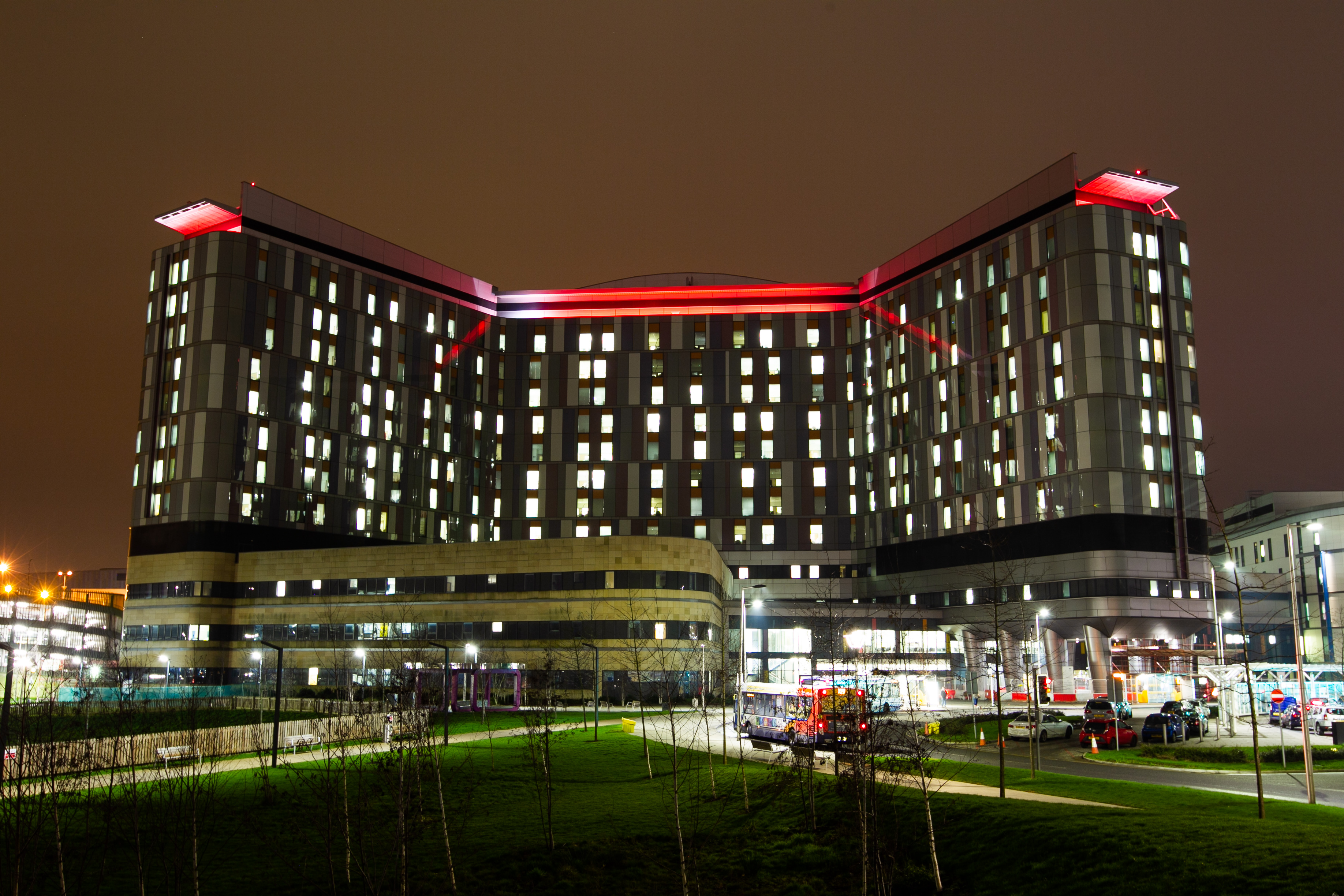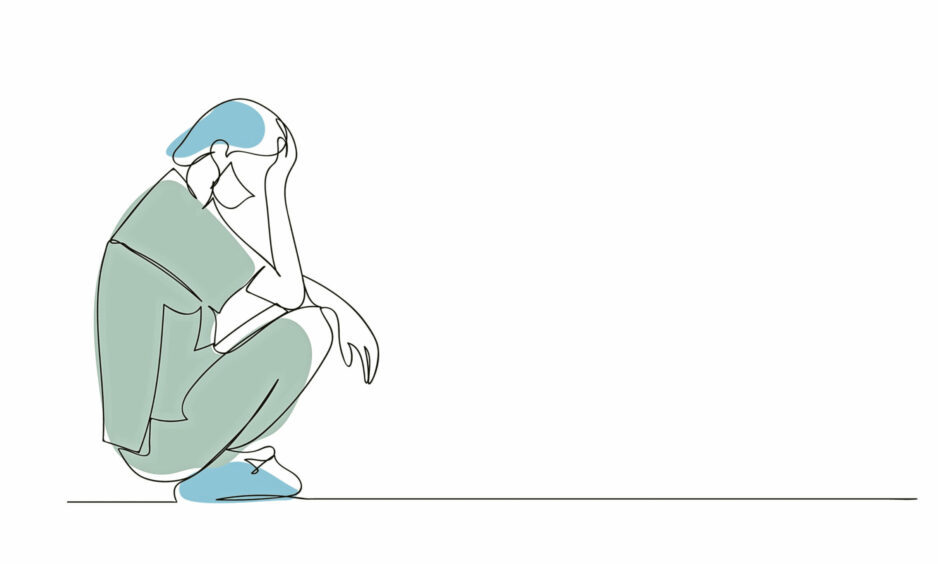
Nursing unions have warned patient safety is being compromised on a daily basis because of worsening staff shortages crippling wards.
Wards, including those with seriously ill elderly people, have been left with one nurse covering 30 patients.
The Royal College of Nursing Scotland (RCN) warns of the risk to patient safety where nurses are on demanding 12-hour shifts with no breaks for food or water.
Colin Poolman, RCN Scotland interim director, said: “Every day our members are seeing patient care compromised because there simply are not enough nursing staff to go round. Patient safety is at risk and staff are suffering.
“They are having to cope with the burden of knowing they haven’t been able to do their best while worrying about how they can heat their homes, feed their families and find the money to travel to work. There remain over 6,000 unfilled jobs across NHS Scotland, spending on agency staff continues to rocket and almost six in 10 nursing staff are planning or thinking about leaving their current job.
“In the coming weeks we will be balloting our members on industrial action. Our members are clear that something has to change for their concerns over patient safety and staff wellbeing to be heard.”
The RCN has delayed its strike ballot during the period of mourning for the Queen. It is asking for an above-inflation rise under the Agenda For Change being demanded by all health worker unions.
The warnings over patient safety come as research by the Nuffield Trust, an the independent think tank, shows the number of nurses leaving the NHS is rising faster in Scotland than England.
Last month, we reported how 1,485 Scottish nurses left the profession in the six months to March, a rate of 2.1% of the workforce, compared with 1.7% in England. Nigel Edwards, Nuffield Trust CEO, said: “Scotland has done a bit more long-term planning for recruiting nurses than England, but there hasn’t been enough focus on retention.”
In July, RCN members working at Glasgow’s Queen Elizabeth University Hospital wrote to the NHS Greater Glasgow and Clyde board, warning of grave concerns over staffing levels.
The professional body for midwives said it too was aware of people leaving their jobs because of concerns over staffing. Andrea Sutcliffe, chief executive of the Nursing and Midwifery Council, said: “We are acutely aware of workforce pressures impacting our professions – indeed some of the professionals who left our register last year told us about their struggles with increased workloads and a lack of staff.”
Age Scotland chief executive Brian Sloan said: “Our older people’s wards must have enough highly skilled nursing teams and flexible staffing arrangements to deliver the vital care they deserve.”
One nurse, 30 patients, and too many tears to count
 A nurse working in Scotland’s largest hospital, the Queen Elizabeth University Hospital in Glasgow, has described being crushed by the stress of staff shortages, writes Janet Boyle.
A nurse working in Scotland’s largest hospital, the Queen Elizabeth University Hospital in Glasgow, has described being crushed by the stress of staff shortages, writes Janet Boyle.
Claire, not her real name, has nursed in both the NHS and, until this summer, in an overseas public hospital where she looked after four or five patients on a shift.
Her work at the QEUH in Glasgow has seen her working up to five hours on a ward with up to 30 patients.
Arriving for a shift, I just hope there is another nurse on. If there isn’t, I just feel like crying because I want to do everything for my patients and know that will not be remotely possible.
The shortage of staff is taking the joy and care out of the job and that is heartbreaking because we are all here because we want to be good nurses.
Often you only discover that you will be the only nurse on the ward when you arrive to start your shift. It means an exhausting 12 hours knowing I will not be able to give patients the care they need or deserve.
Often the nurse who has already worked that long shift will stay on to help with patients’ medicines. I have worked in an elderly ward in the QEUH where I have been on myself or stayed late to help another nurse who would be on herself if I left at the end of my shift.
That meant a one-to-30 nurse-patient ratio for a few hours until a second nurse could be found. Overseas you would never be allowed to nurse more than five patients, and teamwork and conditions are vastly better. When I am on myself I have to seek out a nurse in another ward to countersign a controlled drug. It takes two signatures. These drugs include opiates for pain relief and some of the patients are in a lot of pain.
We are supposed to go on ward rounds with doctors but rarely do now so vital information on patients – about who is at home to look after them if they leave – can be missed.
We are supposed to write up notes twice a day but that does not always happen because there’s simply no time. Then you have to follow up from a ward round and arrange ambulance transport, home care and liaise with occupational therapists.
But we are so short-staffed that the students are helping the auxiliaries with showering or feeding patients so there is no time. There is no time to train people, there is no time for anything but fighting fires.
Some students have left their degree course and others, who are about to start university, abandon it. One auxiliary who got the entry qualifications wanted to leave before she started because the workload and responsibilities terrified her. She was upset about disappointing her parents, who had worked to fund her college studies and were proud she had got into university.
Other full-time nurses have left to work on bank shifts. They have had enough. Facing angry families upset that parents have had to wait in pain for drugs is awful and overpowering. We apologise but can’t reveal how short-staffed we really are.
I have always thought elderly was the most badly staffed but now? It’s every ward, every day.
The response
Responding to the nurse’s account, NHS Greater Glasgow and Clyde said: “Across the country, Covid-19 has presented unique staffing challenges.
“We fully understand the significant pressures faced by our teams during this time and we are extremely grateful for their hard work throughout the pandemic. Our staffing teams are absolutely committed to finding solutions to the current situation and we work closely with teams on the ground to ensure we utilise our available resources as effectively as possible to support our staff.”

Enjoy the convenience of having The Sunday Post delivered as a digital ePaper straight to your smartphone, tablet or computer.
Subscribe for only £5.49 a month and enjoy all the benefits of the printed paper as a digital replica.
Subscribe